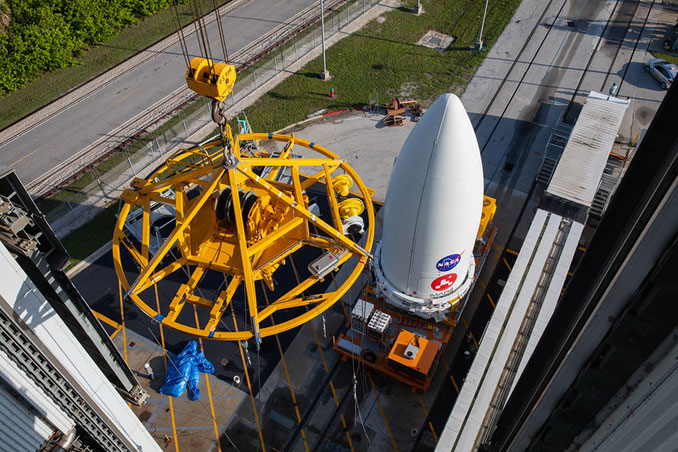
With the UAE’s Hope orbiter on its way to Mars, followed by the successful launch of China’s Tianwen-1 orbiter-rover combination on 23 July, all eyes are now on NASA as it readies the $2.4 billion Perseverance rover for launch from Cape Canaveral atop an Atlas 5 rocket on 30 July.
The rover and its interplanetary cruise stage, packed inside a nose cone fairing, were mounted atop the Atlas 5’s Centaur upper stage on 7 July. Engineers later installed the radioisotope thermoelectric generator that will power Perseverance on the surface of the red planet.
Launch originally was planned for 17 July, but the flight was delayed by ground-processing issues. The rocket and spacecraft now appear solidly on track for launch 30 July pending the outcome of a final Launch Readiness Review three days before takeoff.

“We’ll keep our heads down through the final prelaunch activities and the opening of the launch window until we’re certain this spacecraft is safely on its way,” said Matt Wallace, deputy project manager at NASA’s Jet Propulsion Laboratory. “But Mars is a tough customer, and we don’t take anything for granted.”
Hope, Tianwen-1 and Perseverance are expected to reach Mars next February, all three taking advantage of a planetary launch window available once every 26 months when Mars and Earth are in favourable positions.
Hope and Tianwen-1 will brake into orbit around the red planet while Perseverance will plunge directly into the thin atmosphere for a seven-minute descent to Jezero Crater where an ancient river delta – and possible traces of past microbial life – awaits.

The Tianwen-1 orbiter will spend several months mapping the surface of Mars before deploying China’s lander for a rocket-powered landing on a broad plain known as Utopia Planitia. This is China’s first interplanetary mission using all-Chinese hardware and a major step forward for the nation’s ambitious space program.
With Tianwen-1’s launch, “China is on its way to join the community of international scientific explorers at Mars,” NASA Administrator Jim Bridenstine tweeted. “The United States, Europe, Russia, India and soon the UAE will welcome you to Mars to embark on an exciting year of scientific discovery. Safe travels Tianwen-1!”



